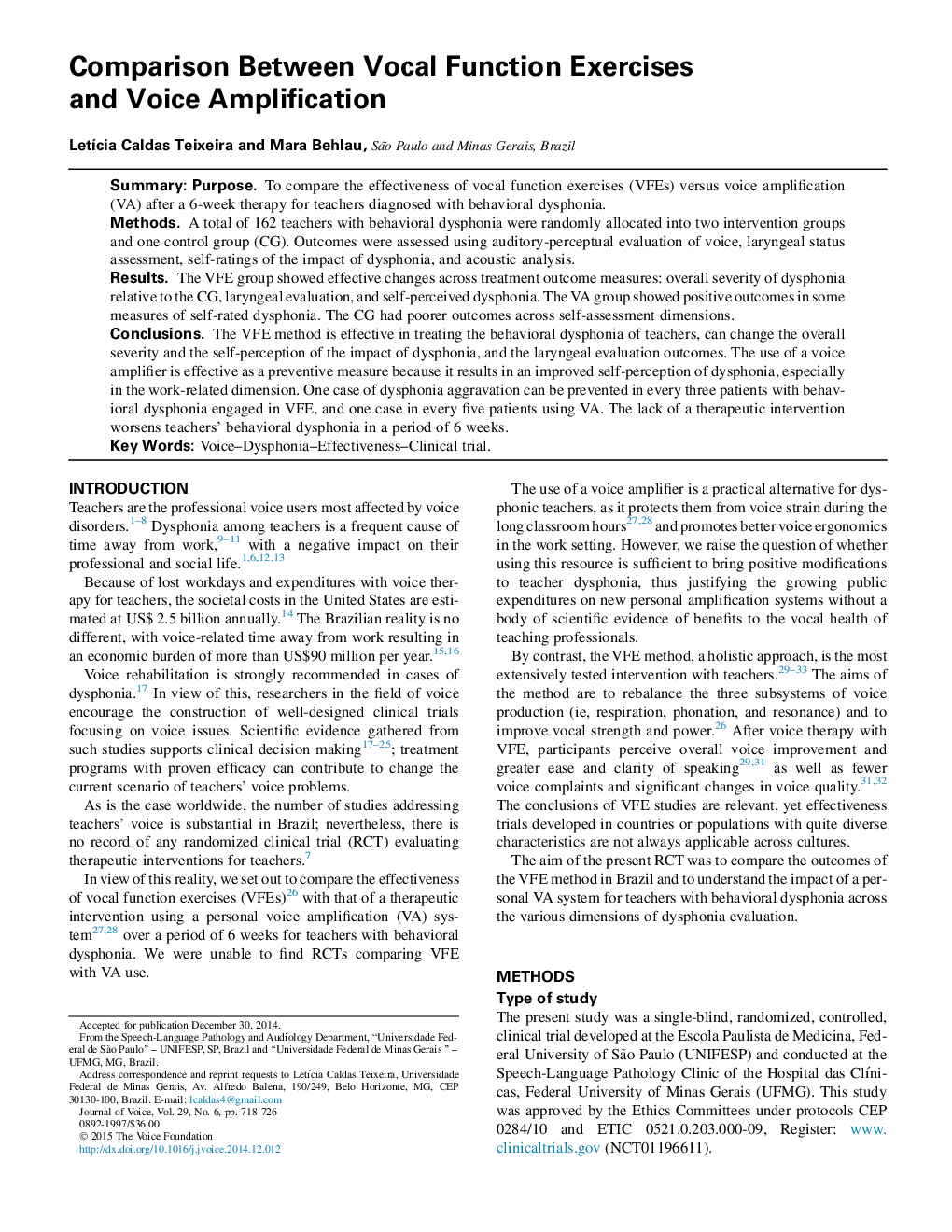| Article ID | Journal | Published Year | Pages | File Type |
|---|---|---|---|---|
| 1101279 | Journal of Voice | 2015 | 9 Pages |
SummaryPurposeTo compare the effectiveness of vocal function exercises (VFEs) versus voice amplification (VA) after a 6-week therapy for teachers diagnosed with behavioral dysphonia.MethodsA total of 162 teachers with behavioral dysphonia were randomly allocated into two intervention groups and one control group (CG). Outcomes were assessed using auditory-perceptual evaluation of voice, laryngeal status assessment, self-ratings of the impact of dysphonia, and acoustic analysis.ResultsThe VFE group showed effective changes across treatment outcome measures: overall severity of dysphonia relative to the CG, laryngeal evaluation, and self-perceived dysphonia. The VA group showed positive outcomes in some measures of self-rated dysphonia. The CG had poorer outcomes across self-assessment dimensions.ConclusionsThe VFE method is effective in treating the behavioral dysphonia of teachers, can change the overall severity and the self-perception of the impact of dysphonia, and the laryngeal evaluation outcomes. The use of a voice amplifier is effective as a preventive measure because it results in an improved self-perception of dysphonia, especially in the work-related dimension. One case of dysphonia aggravation can be prevented in every three patients with behavioral dysphonia engaged in VFE, and one case in every five patients using VA. The lack of a therapeutic intervention worsens teachers' behavioral dysphonia in a period of 6 weeks.
